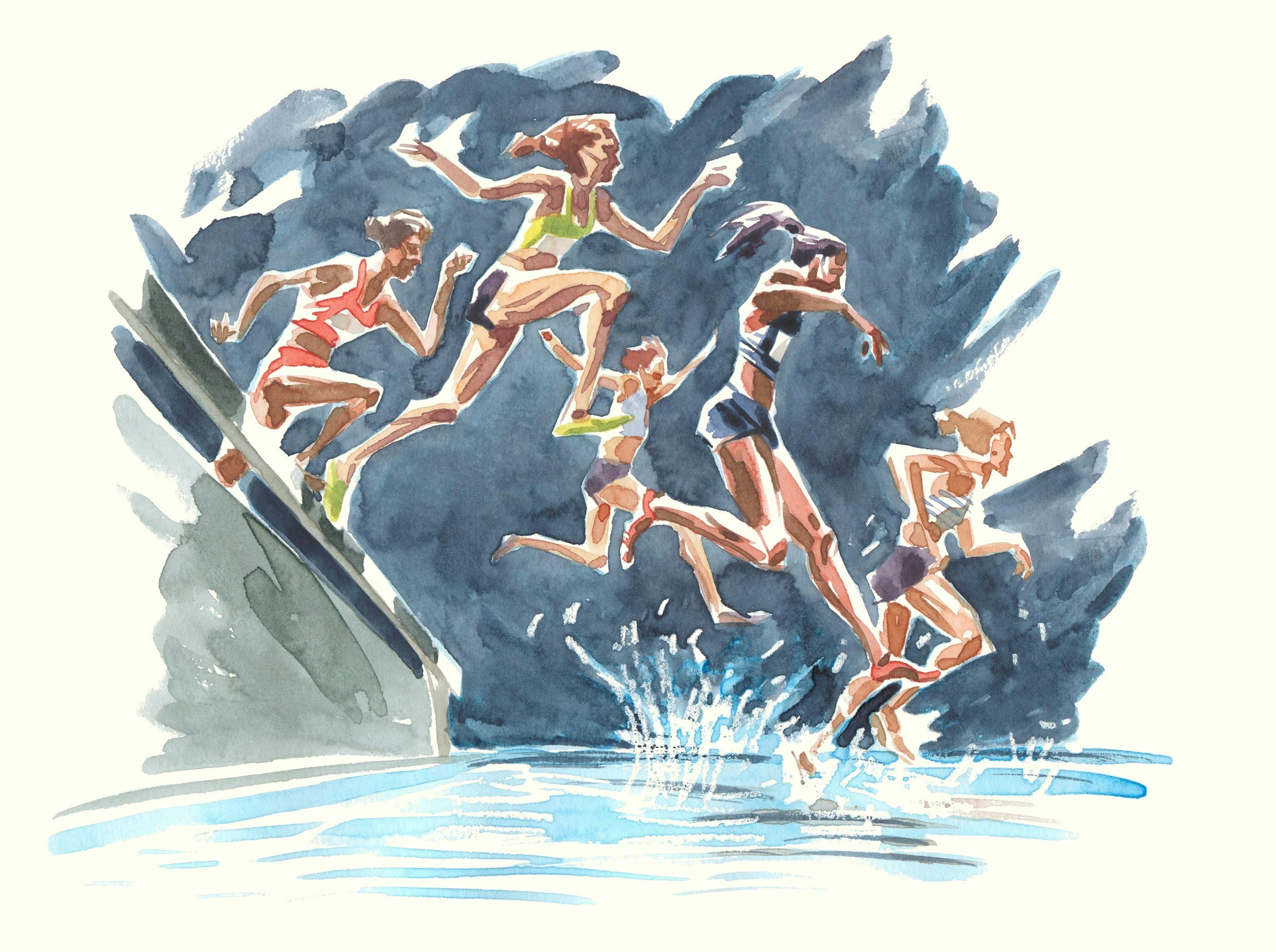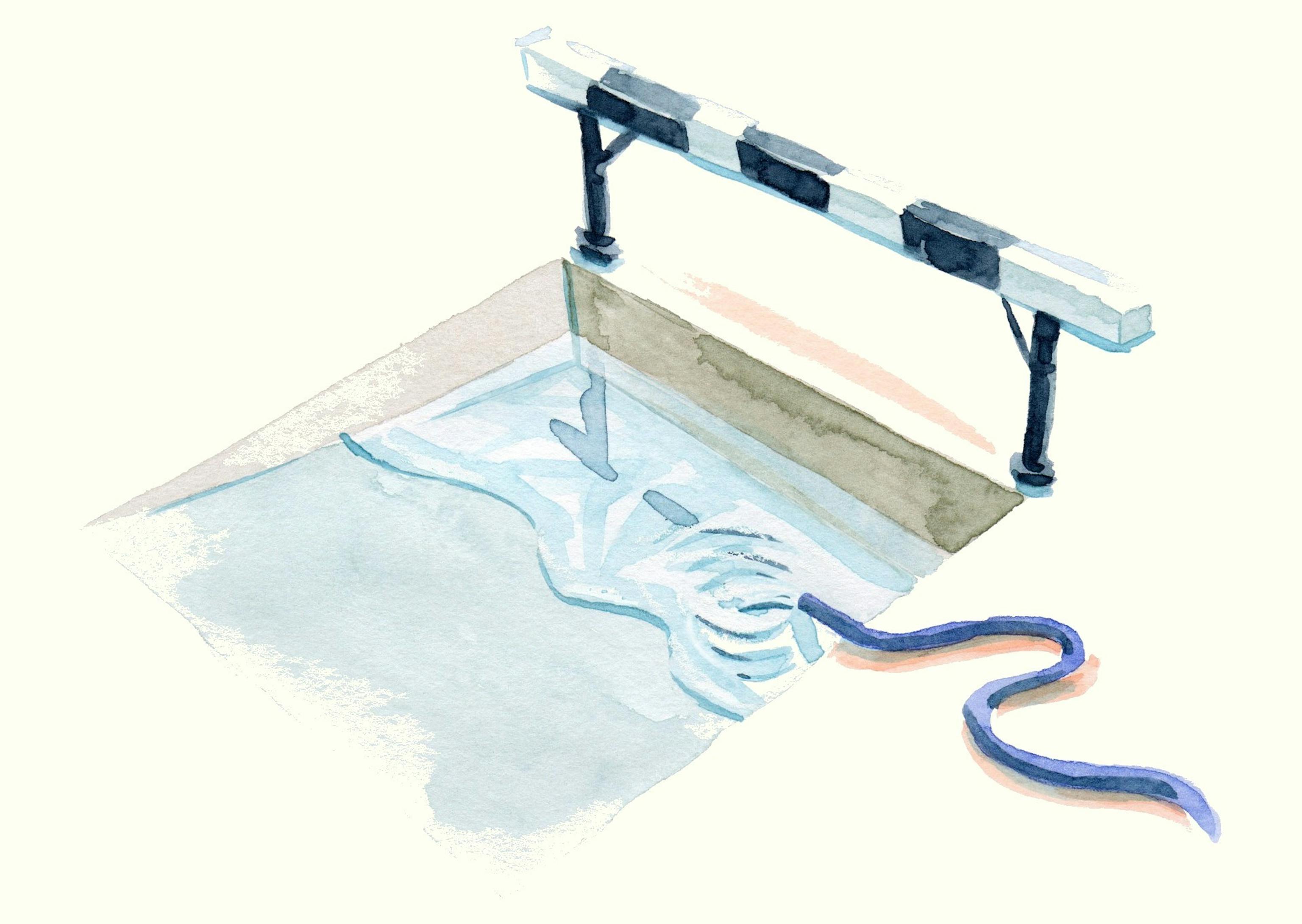

The Fall 2020 issue of METER has just returned from the printers and will be distributed with all Tracksmith orders throughout December and January (or at least while stocks last). This issue also marks a change for METER - we will be going biannual in print and bi-weekly by email. The print edition will become more collectable while the email series will feature the same high-quality, original journalism you've come to expect of METER in print. You can sign up for the email for free on the Tracksmith Newsletters page.
The theme of this issue is ‘barriers’ so it would have been remiss of us not to include a story on the steeplechase. Liam Boylan-Pett of Lope Magazine has written for us about the rise of the women’s steeplechase, and how in particular, Anna Willard made the event cool. To accompany the story we have illustrations from the British artist Simon Scarsbrook. We initially contacted him simply because we like his work, but it quickly became apparent that he has a deep familial connection with the steeple, when he sent us back a video of his grandfather winning the 2-mile Steeplechase at the 1934 Empire Games (the precursor to the Commonwealth Games). You can watch the video on the AP Archive - it's well worth 2mins of your time.
We spoke to Simon to learn more.

METER: Tell us about your grandfather.
Simon Scarsbrook: It was a joy to be commissioned by METER, particularly because my paternal grandfather, Stanley Scarsbrook, was AAA National Champion & Empire Games (precursor of Commonwealth Games) Champion in 1934.
He was also picked for Great Britain for the 1936 Berlin Olympics, but was unable to travel because of a tooth abscess. He was pretty pragmatic about this, I think, probably thinking he’ll await the next, in 1940…
He was a career soldier and multiple army, individual & team cross-country champion, and I get the impression that that life took over at this point. He, like others, never really spoke of this time but we know he was in the Commandos during World War 2, although we only found out at his funeral that he was one of the first ashore at D-Day.
We didn’t see my grandparents too often growing up as they moved from the outskirts of London to Edinburgh, where my grandmother was from, but I always had this thought of him when I started club running and cross-country racing on some of the same courses that he had in the 1930’s.
I was never from the same mold, heavier and flat-footed, but have always enjoyed running. I never got to race a steeplechase unfortunately, but I, and my brothers, sister and ultimately my sons, have all inherited his love of sport.
METER: It's interesting watching the video of your grandfather's race, how much the event has changed. The idea that steeple barriers weren't always immoveable will come as a surprise to many people.
SS: Yes, clearly the water jump is the only weight-bearing hurdle – the others look as if they are the same as used in the 400 (yards) & sprint. I have my grandfather’s scrapbook (scanned – my dad has the original), and there are photos of him training over sprint hurdles with Lord Burghley (AAA & Olympic hurdler), whom he was good friends with.
My grandfather said that he had trained in ‘water-jump technique’ by watching the Finnish athletes, in that they got maximum distance in the ‘push’ from the top of the barrier, something that didn’t really figure in their own training.

METER: Most of your work is in cycling, which is a pretty expansive world, from the minutiae of the bikes themselves to the intensity of the riders and the huge landscapes the races take place in. Running is perhaps much more condensed by comparison. How does that challenge you as an illustrator and artist?
SS: My art school training was partly ‘fine-art’ & partly ‘commercial’ and I think that I approach most projects in a similar way. I have always life-drawn (figures), and in doing so I think I have a good (although never complacent!) grip on how the human form reacts, shapes and positions during movement and sport.
Running is so much more expressive on the body than cycling and the challenge, I think, is getting that movement over. The side view of the hurdlers was a gift in that respect, in that I could compose the image in such a way that it is almost a static film-strip, with the looseness of the style adding to that flow. I hope.
METER: Can you tell us a bit about process? How much happens in a sketchbook and how much on a computer?
SS: With me it always starts with pencil and paper. The initial sketch would be very rough. I tend to collect together pictorial references, (I am super aware of not just copying photos, but look at various figures from many and draw freehand from the shapes and positions).
I do two or three sketches, refining each time, the last being the composition that I am happy with. In this case I used a ‘light-box’ and traced lightly the sketch onto a heavier, watercolour paper I was to paint directly on to.
I then used a white wax pencil (Chinagraph) to draw the water effect onto the paper (the wax rejecting the paint) and then applied the watercolour paint, building up and letting dry between colours (usually from lighter to darker colour).
The painting is done relatively quickly, with quite a big brush (with a fine tip), which can be a bit unpredictable, but contributes to the style I think.
Once dry (over-night is good, as a fresh eye is always useful), I scanned to the computer and tidied up any blotches or mistakes within Photoshop. I tend to keep as true to the painted illustration as possible though.